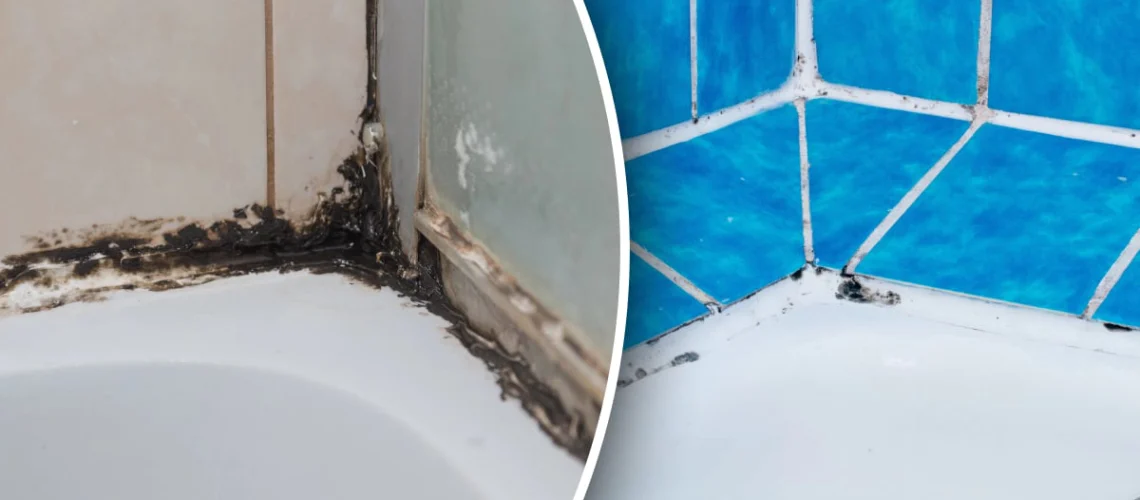Mold in the shower is not only unsightly but can also pose health risks if left untreated. The warm, humid environment of a bathroom is the perfect breeding ground for mold, which can quickly spread on shower walls, grout, and tiles. Cleaning mold in your shower is essential for maintaining a healthy bathroom environment. Fortunately, with the right approach, you can effectively remove mold and prevent it from returning.
Contents
Why Mold Grows in Showers
Understanding Mold Growth
Mold thrives in damp, dark, and humid conditions, making your shower an ideal place for it to grow. The steam from hot showers, combined with moisture on tiles, grout, and caulking, provides mold with the perfect environment to proliferate.
Common Areas for Mold in Showers
Mold is most commonly found in the grout between tiles, around shower doors, on caulking, and on the shower curtain. These areas tend to stay wet longer, making them more susceptible to mold growth.
Supplies You’ll Need
Before you start cleaning, gather the following supplies:
- White vinegar
- Baking soda
- Bleach
- A spray bottle
- A scrub brush or old toothbrush
- Protective gloves
- A face mask (to avoid inhaling mold spores)
- A bucket
- Sponge or cloth
Method 1: Using Vinegar and Baking Soda
Step 1: Spray the Affected Area with Vinegar
Fill a spray bottle with white vinegar and spray it directly onto the moldy areas. Vinegar is a natural mold killer and works well on most surfaces.
Step 2: Let the Vinegar Sit
Allow the vinegar to sit for at least an hour. This gives it time to penetrate the mold and break it down.
Step 3: Scrub with Baking Soda
After the vinegar has had time to work, create a paste by mixing baking soda with a small amount of water. Use a scrub brush or old toothbrush to apply the paste to the moldy areas. Scrub thoroughly to remove the mold.
Step 4: Rinse with Water
Once you’ve scrubbed away the mold, rinse the area with warm water to remove any remaining residue. Dry the area with a clean cloth or towel.
Method 2: Using Bleach
Step 1: Mix Bleach Solution
In a well-ventilated area, mix one part bleach with three parts water in a spray bottle. Bleach is highly effective at killing mold, but it should be used with caution.
Step 2: Apply the Bleach Solution
Spray the bleach solution onto the moldy areas of your shower. Make sure to wear protective gloves and a mask to avoid direct contact with the bleach and to prevent inhaling fumes.
Step 3: Let It Sit
Allow the bleach solution to sit for about 10-15 minutes. This will give it time to kill the mold and disinfect the area.
Step 4: Scrub the Mold Away
Use a scrub brush or old toothbrush to scrub the moldy areas. The bleach should have loosened the mold, making it easier to remove.
Step 5: Rinse Thoroughly
Rinse the area with warm water to remove any remaining bleach solution. Be sure to dry the area completely to prevent mold from returning.
Method 3: Preventing Mold Growth in the Shower
Step 1: Keep the Shower Dry
The best way to prevent mold from growing in your shower is to keep it as dry as possible. After each shower, use a squeegee or towel to remove excess water from the walls, doors, and floor.
Step 2: Improve Ventilation
Proper ventilation is key to preventing mold. Make sure your bathroom has adequate airflow by using an exhaust fan during and after showers, or by keeping a window open to reduce humidity.
Step 3: Clean Regularly
Regular cleaning can help prevent mold from gaining a foothold in your shower. Use a bathroom cleaner or a vinegar and water solution to clean your shower at least once a week.
Step 4: Use Mold-Resistant Products
Consider using mold-resistant shower curtains, grout, and caulking. These products are designed to resist mold growth, making it less likely for mold to develop in the first place.
Mold in the shower is a common problem, but it’s one that can be managed with regular cleaning and proper maintenance. Whether you choose to use natural methods like vinegar and baking soda or the power of bleach, taking the time to clean mold promptly will help keep your bathroom safe and mold-free. By following these steps and incorporating preventative measures, you can enjoy a clean, healthy shower environment.
FAQs
Yes, bleach is safe to use on most shower surfaces when diluted properly. However, it’s important to ensure good ventilation, wear protective gloves, and avoid mixing bleach with other cleaners like ammonia, as this can produce dangerous fumes.
Yes, mold can be harmful, especially to individuals with allergies, asthma, or weakened immune systems. Prolonged exposure to mold can lead to respiratory issues, skin irritation, and other health problems.
It’s recommended to clean your shower at least once a week to prevent mold growth. Regular cleaning helps remove soap scum, moisture, and other conditions that encourage mold development.
Yes, natural cleaners like vinegar and baking soda are effective at removing mold from shower surfaces. Vinegar is a natural disinfectant, and baking soda helps scrub away mold while deodorizing the area.
If mold continues to return despite regular cleaning, it may indicate an underlying issue with ventilation or moisture. Ensure your bathroom is well-ventilated, repair any leaks, and consider using mold-resistant products in your shower.



